Art Fairs
Meet 6 Rising Talents From the Inaugural Photofairs New York, From a Digital Dynamo Wielding A.R. to a Space-Bound Romantic
Here are our picks from the 56 exhibitors.
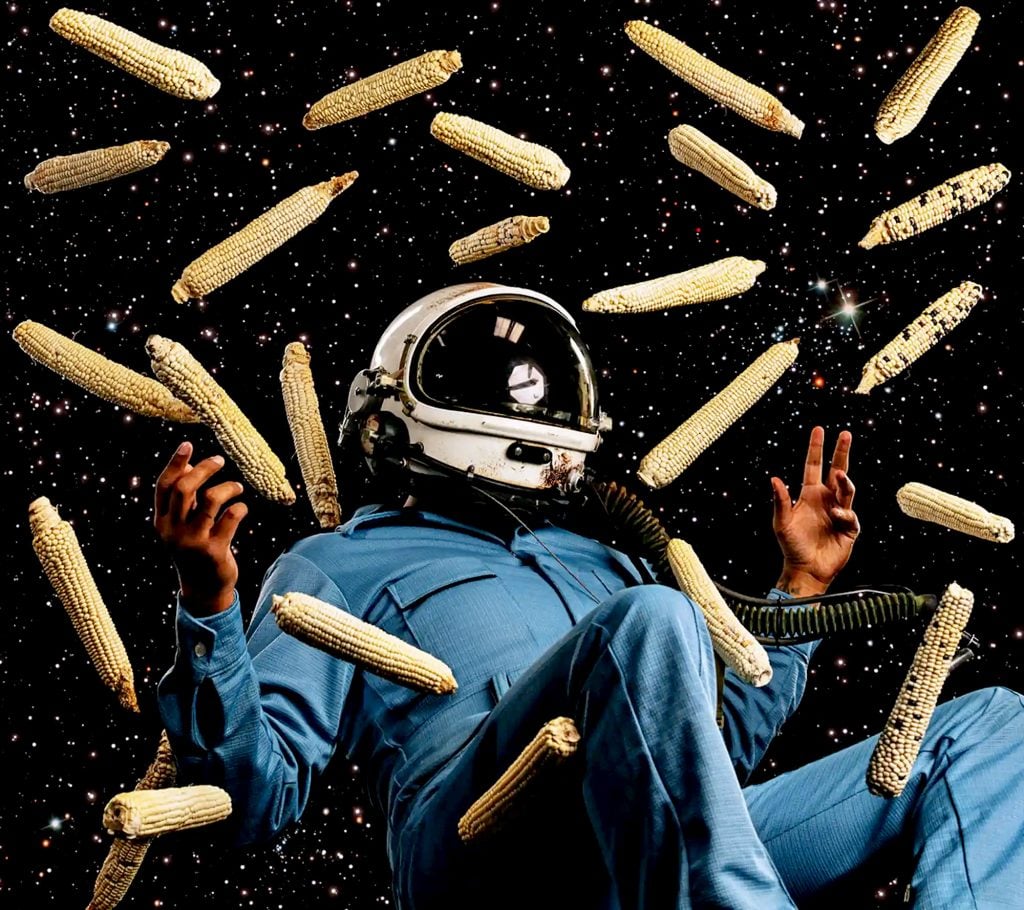
Here are our picks from the 56 exhibitors.

Lee Carter &
Annikka Olsen

Ready for its close-up, Photofairs New York made its debut September 8–10 at the Jacob Javits Center in Manhattan, alongside the Armory Show.
A nine-year staple of Shanghai, where it has become Asia’s largest photography exposition, Photofairs’ inaugural New York edition brought together 56 exhibitors from over 20 cities around the world. Together, they presented the latest in traditional photo-based artworks, digital photography, virtual reality, interactive works, as well as pieces that consider the materiality of the medium. “I love this niche of photography,” the fair’s director, Helen Toomer, told Artnet News before launch. “It has always been an innovative medium, and it’s just so vast in terms of the tools that can and have and will be used.”
Additionally, the fair hosted a discussion series among thought leaders in the field. Highlights included artist Derrick Adams in conversation with Michi Jigarjian—president of Baxter St. Camera Club of New York—on leisure and joy in artistic practice, and a discussion between photographer Cara Romero—a citizen of the Chemehuevi Indian Tribe—and Fotografiska New York’s Amanda Hajjar on Indigeneity in art. The festivities drew bold-face collectors as well: actor Chris Rock snapped up First Dance (2023), by Caleb Kwarteng Prah from Paris-based Nil Gallery’s presentation of the Ghanaian artist, the gallery announced on Facebook.
Here are our picks from Photofairs New York 2023.
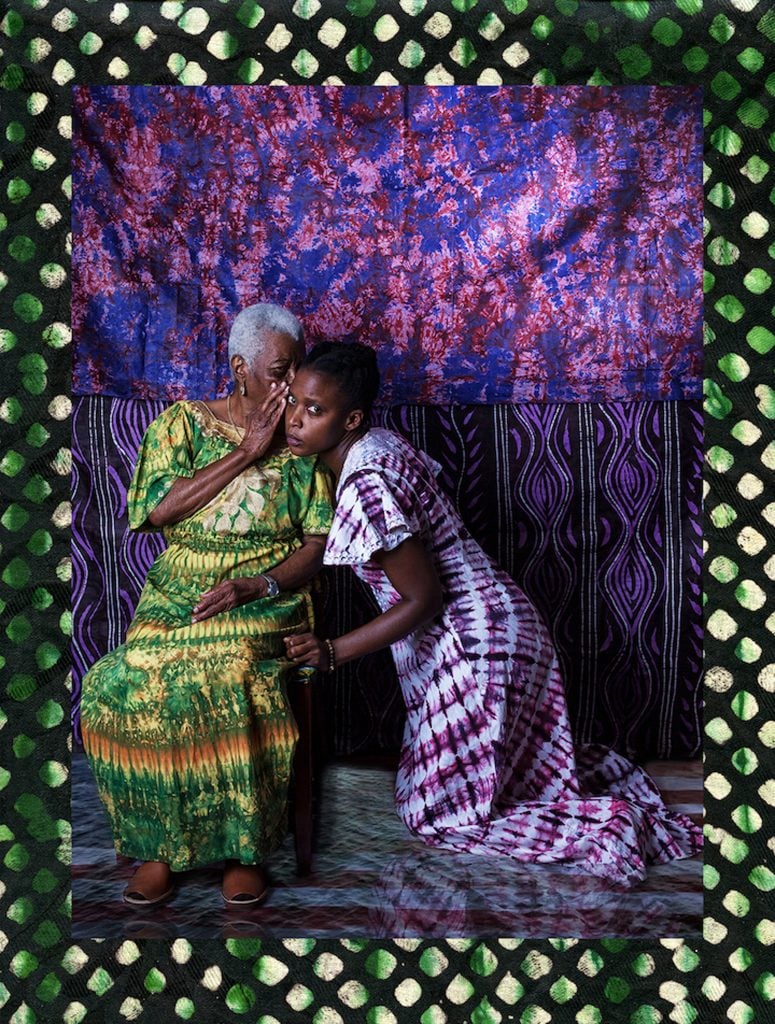
Adama Delphine Fawundu, Passageways #1 (2017). © Adama Delphine Fawundu. Courtesy of the artist and Hesse Flatow, New York.
Photographer and visual artist Adama Delphine Fawundu’s highly anticipated presentation with New York’s Hesse Flatow illustrates her simultaneous aptitude for experimentation and cohesive vision. Known for her wide-ranging multidisciplinary practice that engages with ideas around ancestral memory and indigenization, her unique and sometimes novel use of photography as a medium stands out.
Mining her heritage—Fawundu is of Mende, Krim, Bamileke, and Bubi descent—and familial connections for inspiration in conjunction with photographic processes, the artist pushes the boundary of what a photograph can be. Influenced by the batik fabrics used by her grandmother, her images are variously produced directly on, affixed to, or framed by fabric, resulting in new patterns, designs, and interventions that speak to diasporic identities. Freed from the constraint of a single image printed on paper, the photography is ultimately one tool among many in Fawundu’s practice. —Annikka Olsen
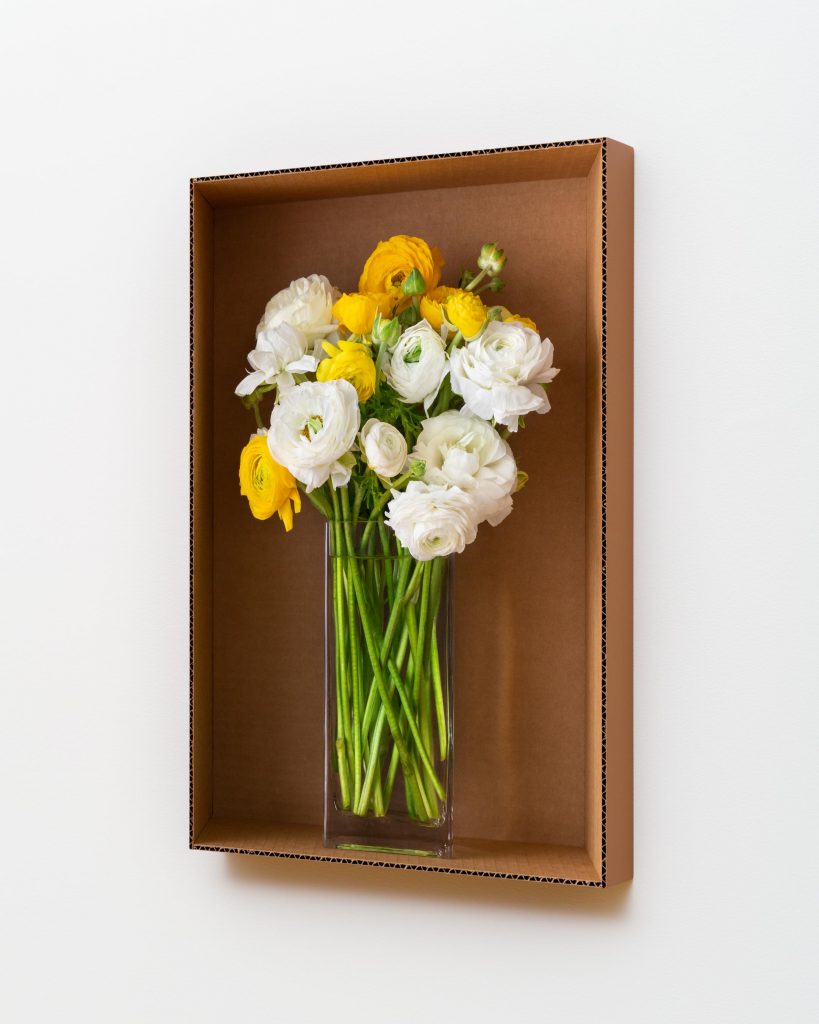
Daniel Handal, White & Yellow Ranunculus (Clear) (2022). © Daniel Handal. Courtesy of the artist and Clamp, New York.
Honduran-born, New York City-based artist Daniel Handal’s photography project “Engaños,” meaning “deceptions” or “illusions” in Spanish, takes inspiration from Joris-Karl Huysmans’s 1884 novel Against the Grain and its exploration of individuality and truth. Works from this project present an unexpected compositional juxtaposition: beautiful, carefully arranged floral bouquets in simple corrugated boxes. As photographs, they push the medium to its representational limit through their carefully deployed use of trompe l’oeil and other visual tricks. The images are near hyperclear, and mounted on painted museum boxes to further convey a sense of real space and depth, Handal’s work makes it difficult to tell at first glance whether it is an image or an object (or both).
With the aim of disrupting ideas around beauty and engaging with digital-era concerns around perception and reality, Handal leverages the extremes of photographic mechanical reproduction to create this equally stunning and unsettling series. —Annikka Olsen
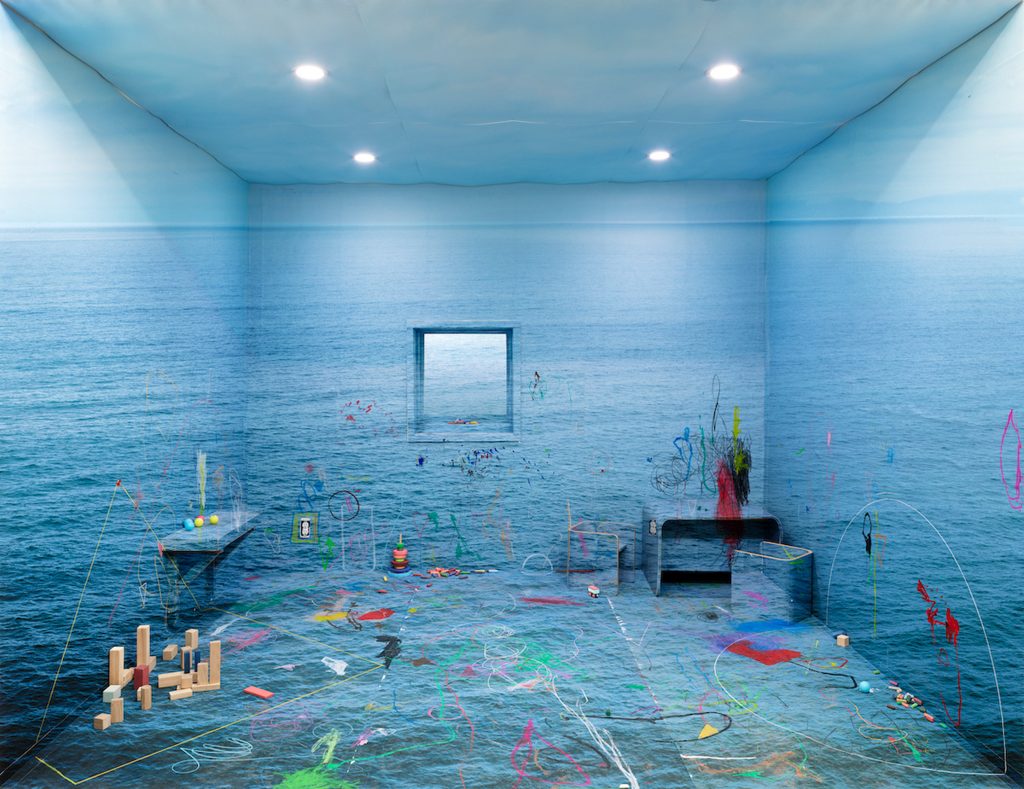
Chris Engman, Playroom (2021). © Chris Engman. Courtesy of the artist and Luis De Jesus Los Angeles.
Christ Engman’s recent body of work confronts a long-standing photographical quandary: where does documentation end and artwork begin? On view with Luis De Jesus Los Angeles, Engman’s work demonstrates the formal and conceptual possibilities for combining faithful record and aesthetic creation. Here, the images present paintings, drawings, and installations (variously made by Engman himself or with young his son), carefully captured and printed to convey the sense of inhabitable space in the image. Then, the artist projects the contents of the photograph into the fair booth by displaying objects from those photographs, such as a wooden ladder featured in one of the vignettes, in a conceptual take on fictive and real spaces.
For Engman, the combination of mediums—photography with drawing and painting—is a novel development in his practice, and “the stubborn indexicality of photography” is balanced with the playful and visceral nature of mark making. Both the works individually and the project on the whole offer new ideas and approaches to how photography is deployed as a form of documentation and method of art-making. —Annikka Olsen
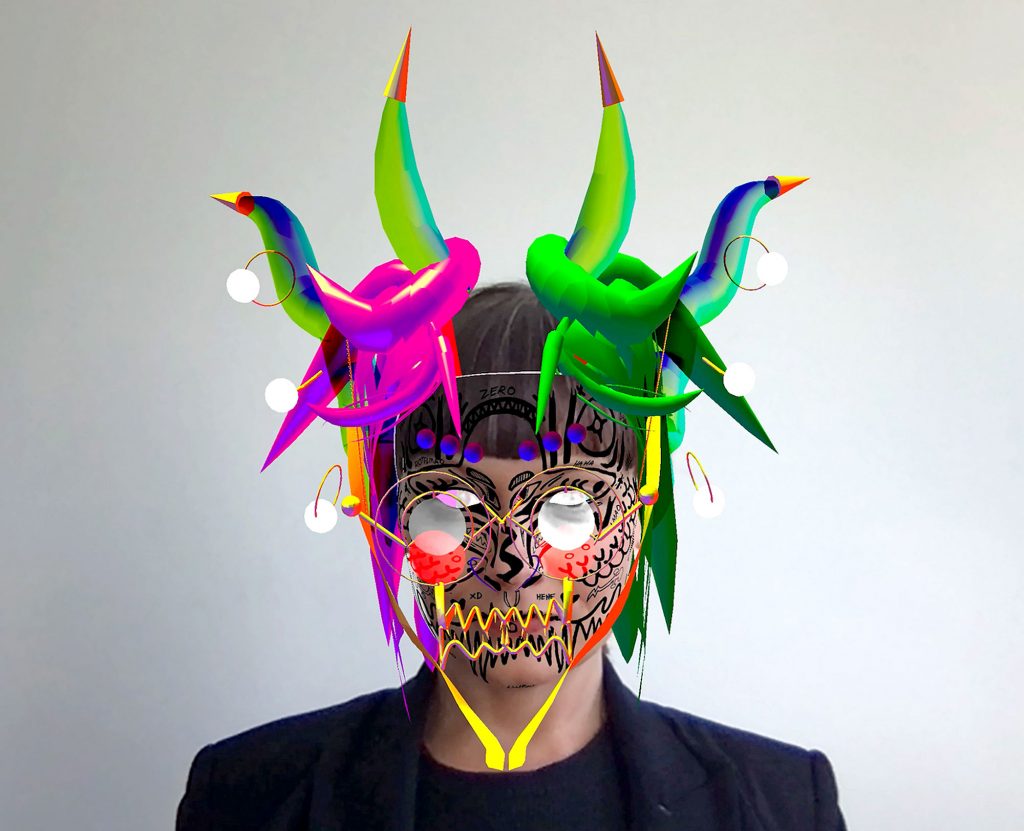
Huntrezz Janos, Anime Villainy (2020). Courtesy of the artist and Transfer Miami.
Artist Huntrezz Janos’s interactive face filters were among the more popular attractions of Photofairs, with visitors peering into an augmented-reality mirror and “trying on” various faces that were not, for better or worse, their own. But these new filters from the digital artist—known for her intricate 3D simulations and world-building, with a focus on identity, gender, community, and social structures—are intended for more than play. Combining the rich history of masks as symbolic narrative devices with arcane vaporwave aesthetics that emerged in the early 2010s, Janos created the filters using fantastical and impossible guises from real, imagined, and daydreamed scenarios from her own life—inventing a mythology of the self using augmented reality as her tool. “There are many spaces where I am not valued, or safe to be myself, a Black trans woman,” the artist said. “My new media work defies those attitudes by utilizing innovation to share my intersectional perspective.” —Lee Carter
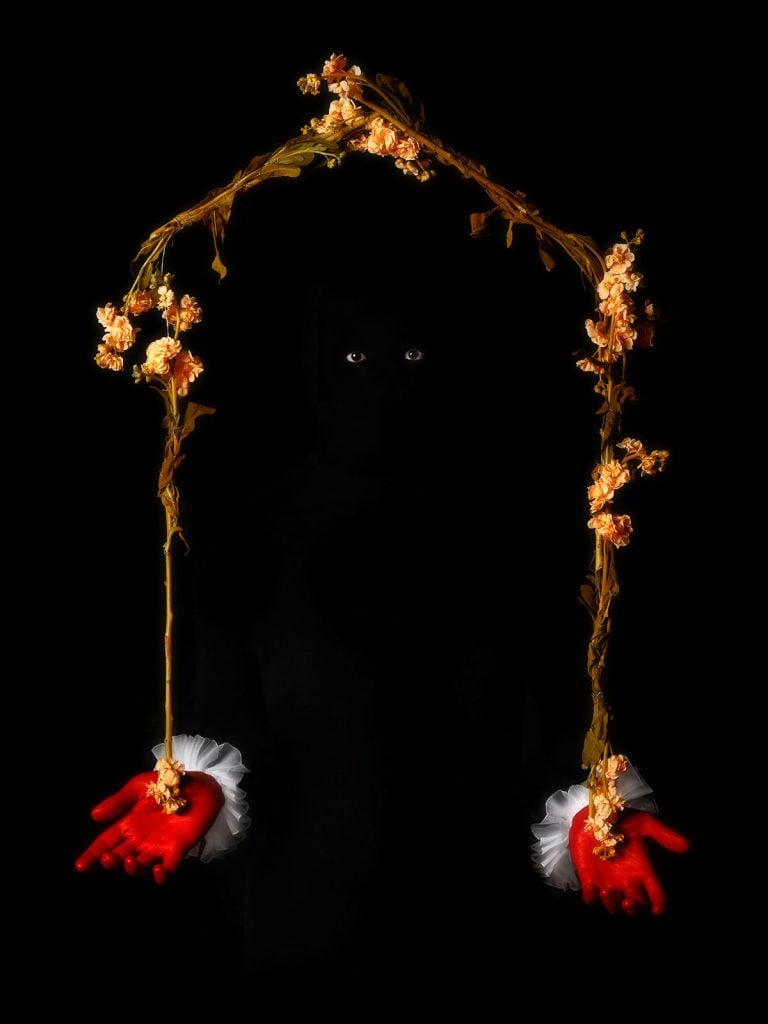
Elliot and Erick Jiménez, Abre Camino (2023). Courtesy of Spinello Projects.
Brothers Elliot and Erick Jiménez display a sophistication beyond their years. Represented by Miami-based Spinello Projects, the young Cuban-American twins presented a sumptuous solo exhibition that continued their exploration of Cuban Yoruba, in particular the island people’s syncretic merging of Catholic tenets with West African theologies. Yet even as the duo pushed into spiritual figuration, they retained elements of the Western art canon. In one especially haunting image, they visualized an Orisha spirit as a shadow figure, its open hands holding the outline of a house, a sacred symbol of safe passage, but with floral decoration one might find in an Impressionist painting. “We interweave religious icons with art historical references,” they explained to Artnet News. “Being twins, Cuban-American, and raised in a biracial family, we are used to binaries.”
That their lush, velvety vision has been tapped by Vogue Italia is no surprise, and they have collaborated with an array of luxury brands like Gucci and Hermès. Earlier this year, they made history by photographing musician Bad Bunny for the cover of the first Spanish edition of Time magazine; he’s never looked so good. —Lee Carter
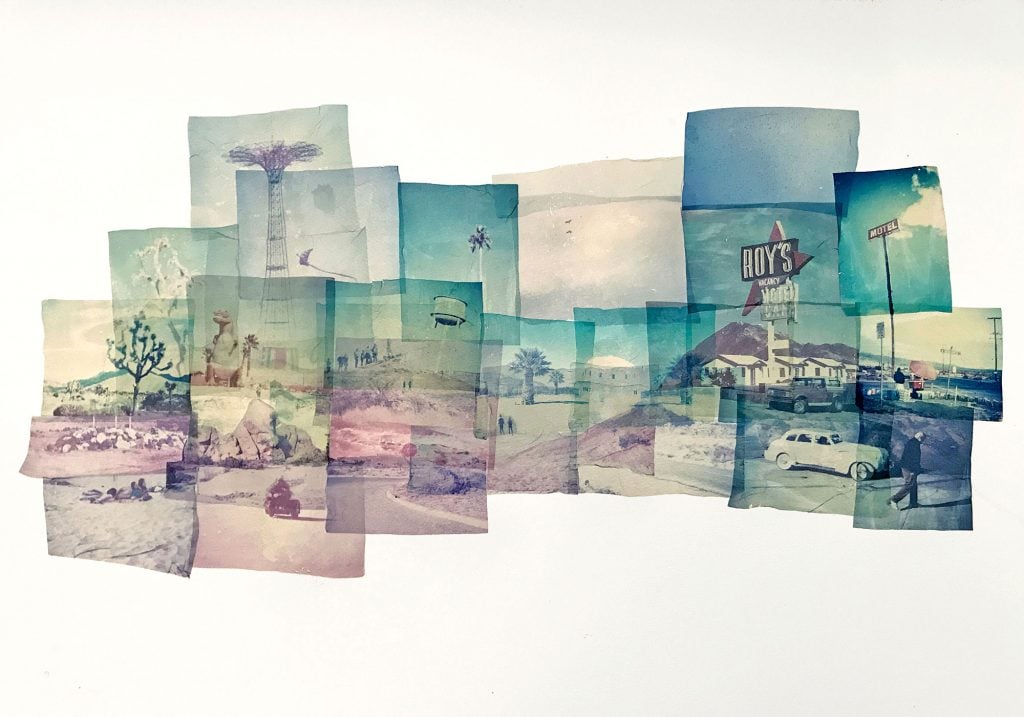
Rhiannon Adam, Searching For Mecca (2023). Courtesy of Elijah Wheat.
Rhiannon Adam will soon embark on an artist residency like no other. The Irish-born photographer was selected—out of a million or so hopefuls—by the Japanese billionaire entrepreneur and art collector Yusaku Maezawa to make a weeklong voyage around the moon on a SpaceX spaceship in 2024, along with seven other creatives. She was chosen, in large part, for her aptitude with mood, nostalgia, and tactility in her photographs.
In a solo display at the booth of Elijah Wheat, of Newburgh, New York, Adam showed large-scale composites of Polaroids she’s taken on trips around the world. She used film that Polaroid no longer makes and, to achieve a wistful glow, practiced a painstaking process of lifting emulsion from the finished photo and transferring it to watercolor paper. For one composite, according to gallery director Carolina Wheat, the photographer trekked to a desert in the American West to capture NASA scientists test-driving a Mars rover. For a photographer so taken with uncanny space-age imagery, and who uses an instant camera from 1968, this lunar trip ought to be the ultimate moonshot. —Lee Carter